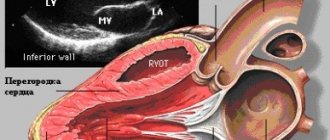When is it appointed?
The analysis is not considered integral, but is prescribed if the expectant mother has chronic diseases:
- pyelonephritis;
- cholecystitis;
- gastritis.
Depending on the signs and severity of the pathology, the range of parameters studied can increase.
In addition, biochemical study makes it possible to establish the degree of glucose.
The analysis may be needed for women who are obese or overweight, that is, those who are at risk of developing gestational diabetes.
Why is it important to know your glucose level?
The state of carbohydrate metabolism can be checked by finding out the concentration of glucose in the blood. Normally for pregnant women it should be 3.5–6.5 mmol/l. After sleep or after a long fast, the sugar level drops, after eating it increases.
Glucose levels can be checked not only by drawing blood from a vein, but also using a glucometer. And since it is very important for a pregnant woman to monitor the concentration of this particular substance, you can check it yourself at any time.
So why exactly is information about the concentration of glucose in the blood of the expectant mother so necessary for doctors?
Pregnant women have a huge risk of developing diabetes. After childbirth, it may disappear, or it may degenerate into permanent type 2 diabetes. In women with gestational diabetes (that is, diabetes during pregnancy), the risk of developing type II diabetes increases by 2–4 times!
For more information about gestational diabetes, its symptoms and treatment, watch this video:
Preparation rules
Preparation for taking samples.
- On an empty stomach, the contents of sugar, creatinine, bilirubin, and lipid profile are studied.
- There is a 10-hour period between eating food and taking samples. Tea, sweet coffee, fresh juice are strictly prohibited. It is possible to drink water.
- Characteristics change throughout the day, for this reason it is recommended to take tests in the morning.
- The day before the collection, it is preferable to avoid physical stress.
- Stop drinking alcohol and change your diet and daily routine.
- If possible, avoid taking medications.
It is important not to become emotionally overexcited before the study.
Changes in enzyme content
Specific proteins are enzymes involved in important metabolic processes in the human body. The level of fibrinogen, ALT, AST, pancreatic amylase and alkaline phosphatase makes it possible to diagnose dangerous changes in the maternal body.
If the ALT level in a blood test becomes more than 35 units, a woman most often experiences symptoms of toxicosis, which is normal for pregnancy. Another factor that increases the ALT value is the development of pathological processes in the liver.
Another protein is AST. The upper limit of its norm corresponds to 31 units. If the value is exceeded, the doctor may suspect dangerous processes that negatively affect the woman’s health indicators:
- pathological processes in the kidneys;
- disturbances in liver function associated with the outflow of bile;
- previous myocardial infarction;
- blood clot formation;
- inflammatory processes in the pancreas;
- dropsy.
The enzyme alkaline phosphatase is responsible for saturating organs and tissues with essential phosphorus and transporting this element in the body. Its permissible level is limited to values from 40 to 150 units contained in a liter of blood. If the result of the analysis displays increased values of this element, the pregnant woman may experience processes associated with improper functioning of the liver, the production of bile is disrupted, and there are problems with its outflow from the gallbladder. Decreased alkaline phosphatase occurs due to a lack of magnesium or zinc associated with thyroid hormone deficiency.
Low enzyme levels can be caused by abnormal placental development, fractures, and bone injuries.
Pancreatic amylase should be contained in serum in an amount not exceeding 50 units per liter. If the level is higher, the patient may have pathological changes in the functioning of the thyroid gland.
Any deviation of enzymes from normal may indicate serious pathologies
Norms of indicators
Protein – characterizes protein metabolism, reflecting the number of proteins in plasma.
During pregnancy, the coefficient can decrease - 44-54 g/l to 52-72 g/l. Protein increases with increased blood density and lack of water due to its rapid loss. Lipids - cholesterol - the main indicator of lipid metabolism. A physical increase from 4.25-6.3 to 5.1-7.3 mmol/l is acceptable. It is explained by an increase in the formation of magmatic sterols secreted by the liver, which are necessary for the formation of blood vessels in the child and the placenta.
Sugar is an integral part of the life process. In expectant mothers, it is permissible to reduce the level to 2.2-3.1 mmol/l due to the needs of the growing child. An increase in blood sugar is acceptable for gestational diabetes. The norm is 2.8-6.7 mmol/l.
Alanine aminotransferase – the limit is up to 51 U/l. Aspartate aminotransferase measured up to 50 U/l. A slight increase in characteristics is provoked by mild to moderate gestosis. An increase in ALT 89 IU/l and AST 148 IU/l is an indicator of a severe form of gestosis and indicates that the liver cannot cope with the load.
An increased bilirubin level of 3.3-18.2 is a sign of jaundice.
In pregnant women, a decrease in creatinine down to 36-80 µmol/l is acceptable, when the norm is 53-97 µmol/l.
The contents of elements in a blood test during pregnancy are considered significant:
- a decrease in iron in pregnant women above 8.84 - 23.7 µmol/l is a hidden sign of iron deficiency anemia, typical for mothers;
- a rather high sodium level above 126-135 mmol/l is likely in the presence of toxicosis;
- a decrease in potassium levels 4.1-8.3 - determines renal failure and drug overdose;
- calcium deficiency 3.20 - 3.55 - typical during pregnancy, which can be explained by the child’s need for bone formation
- An increase in phosphorus content in the blood of more than 1.0-1.4 mmol/l indicates an overdose of vitamin D and renal pathology.
Biochemistry during pregnancy is performed twice: upon registration and at 29 weeks. Blood is taken from a vein on an empty stomach in the morning.
When can a doctor prescribe such a test?
For a woman under observation in a antenatal clinic, biochemistry tests are prescribed twice throughout the entire pregnancy. This occurs when a pregnant mother is registered and 30 weeks after the first diagnosis.
The initial examination allows you to find out the changes in the body that occurred before pregnancy. It can also indicate the presence of deviations from the norm in microelements at a specific point in time. The second time the diagnosis is carried out for the purpose of prevention. By this moment, the mother’s body is completely rebuilt and begins to fully work for two. Analysis may also be prescribed:
- if necessary, monitor the patient in a dispensary;
- to conduct additional studies and observations of concomitant diseases;
- to assess the quality of therapy for complications during pregnancy.
Analysis data can show not only the improper functioning of a particular organ, but also indicate the body’s need for microelements.
Decoding the results
Pregnant women should know the rules. If there are deviations, consult a doctor. Interpretation of a biochemical blood test in pregnant women:
| Index | Norm | Possible reasons for deviations |
| Protein | 64 – 83 g/l | A decrease indicates insufficient dietary intake or excessive excretion, for example, in toxicosis with kidney damage. |
| Albumen | 35-50 g/l | |
| Globulin | 40-60 g/l | |
| Urea | 2.5 - 6.4 g/l | Urea in the blood is reduced during pregnancy and the value does not fit into the given standards, which means problems with the urinary system. |
| Cholesterol | 3.1 - 6.2 g/l | An increase in cholesterol is typical during pregnancy. It is advisable to consult a doctor; in some cases, a detailed analysis is needed. |
| Creatinine | 43 – 87 g/l | If creatinine is low during pregnancy, then there is impaired renal function. A significant increase can indicate a disruption in their work. Slight increase with excessive consumption of beef before donating blood. |
| ALT, AST | <21 U/l | Liver indicators. ALT and AST increased during pregnancy indicates problems in its functioning. |
When is blood biochemistry done in pregnant women?
Throughout pregnancy, this test is usually performed two to three times. First - in the first trimester, during the initial examination of a pregnant woman. Then - in the middle of the second and third trimesters.
If some pathology of pregnancy occurs or a woman has an exacerbation of chronic diseases, such a blood test is prescribed more often. Indications for analysis in all cases are determined only by the attending physician.
Protein metabolism
Proteins are a very important component of blood. They actively participate in all immune reactions, transport many nutrients, hormones and other substances to all organs and tissues.
In laboratories, the level of total protein is determined - the total amount of all its fractions in the blood. Protein fractions include albumin and several types of globulins, which have different structures and, accordingly, functions.
Determining each of the blood protein fractions can make it possible to more reliably identify and evaluate possible disturbances in the functioning of body structures.
Blood protein and pregnancy
The average rate of total protein in the blood is 62–82 g/l. In pregnant women, especially in the last trimester, and after childbirth during breastfeeding, its amount may decrease slightly (53–63 g/l). This condition is usually associated with an increase in the total volume of plasma circulating in the body at this time.
A more significant decrease in the amount of protein in the blood is associated with insufficient nutrition or starvation, with the development of toxicosis and other pathological conditions.
An increase in the level of total protein occurs with general dehydration of the body and some diseases of the internal organs.
Lipid (fat) metabolism
The main function of fats in the body is to provide it with energy.
When studying fat metabolism, several indicators can be determined:
- Cholesterol.
- Triglycerides.
- Fatty acid.
- Phospholipids.
In practical medicine, most often only the level of cholesterol is determined, sometimes its fractions. Even less often, determination of triglyceride concentrations is required.
A detailed analysis of lipid metabolism (lipid profile) should be performed on all pregnant women with excess body weight and/or diabetes.
Cholesterol
It is the main indicator of fat metabolism. It is part of the structure of cell walls (membranes). Also directly involved in the production of bile acids, steroid hormones, etc.
The normal level of total cholesterol in women is about 3.2–6.9 mmol/l. In pregnant women, its concentration can sometimes increase to 10 mmol/l. This condition is due to its increased production in the liver of the expectant mother, since cholesterol is needed for the formation of the vascular system in the fetus and placenta.
During pregnancy, the production of steroid hormones also increases, which affects the amount of cholesterol.
A pathological increase in cholesterol content is determined in diseases of the kidneys, liver, and endocrine organs. Excessive consumption of fatty foods can also increase its concentration.
A decrease in cholesterol concentration is often detected in hyperthyroidism, toxicosis in pregnant women, prolonged fasting, and some infectious diseases.
What do deviations mean?
It must be remembered that differences from generally accepted standards do not guarantee a quick diagnosis, but only indicate problems in the body.
It is important to evaluate each coefficient both individually and in conjunction with others.
Below we analyze what is evidenced by the high or low content of the elements.
Alkaline phosphatase
Alkaline phosphatase during pregnancy indicates problems with the body. These could be gallstones, cancer and other liver pathologies.
Proteins and amino acids
A low coefficient can indicate the presence of pathologies: substance disorders, chronic bleeding, anemia. However, low protein is normal in late pregnancy, during lactation and exercise.
Nitrogen exchange
Low levels indicate liver problems, malnutrition, and poor metabolism. High – about gout, leukemia and skin problems.
Carbohydrates and glucose
Indicates problems with the liver, thyroid gland and pancreas.
Peptides
Indicate the presence of diabetes mellitus and tumors. The diagnosis is made only when combined with other indicators.
Vitamins and microelements
This test determines potassium and sodium levels.
If it is small, toxicosis and low blood pressure appear. Headache, convulsions and even coma appear.
A biochemical blood test during pregnancy will help to promptly identify disorders in the mother’s body. Based on the results, the specialist will prescribe therapy that is effective and safe for the fetus.
Biochemical blood test during pregnancy: main indicators
During pregnancy, it is very important to monitor all types of metabolism. They show the adaptation of the expectant mother’s body to bearing a child, its functionality, as well as its tendency to any pathologies.
Blood biochemistry should be given special attention if a woman has concomitant chronic diseases.
The main indicators in the analysis are the following:
- Total protein.
- Bilirubin (total, direct and indirect).
- Glucose.
- ALT.
- AST.
- Urea.
- Creatinine.
- Alkaline phosphatase.
- Cholesterol.
- Calcium.
- Iron.











